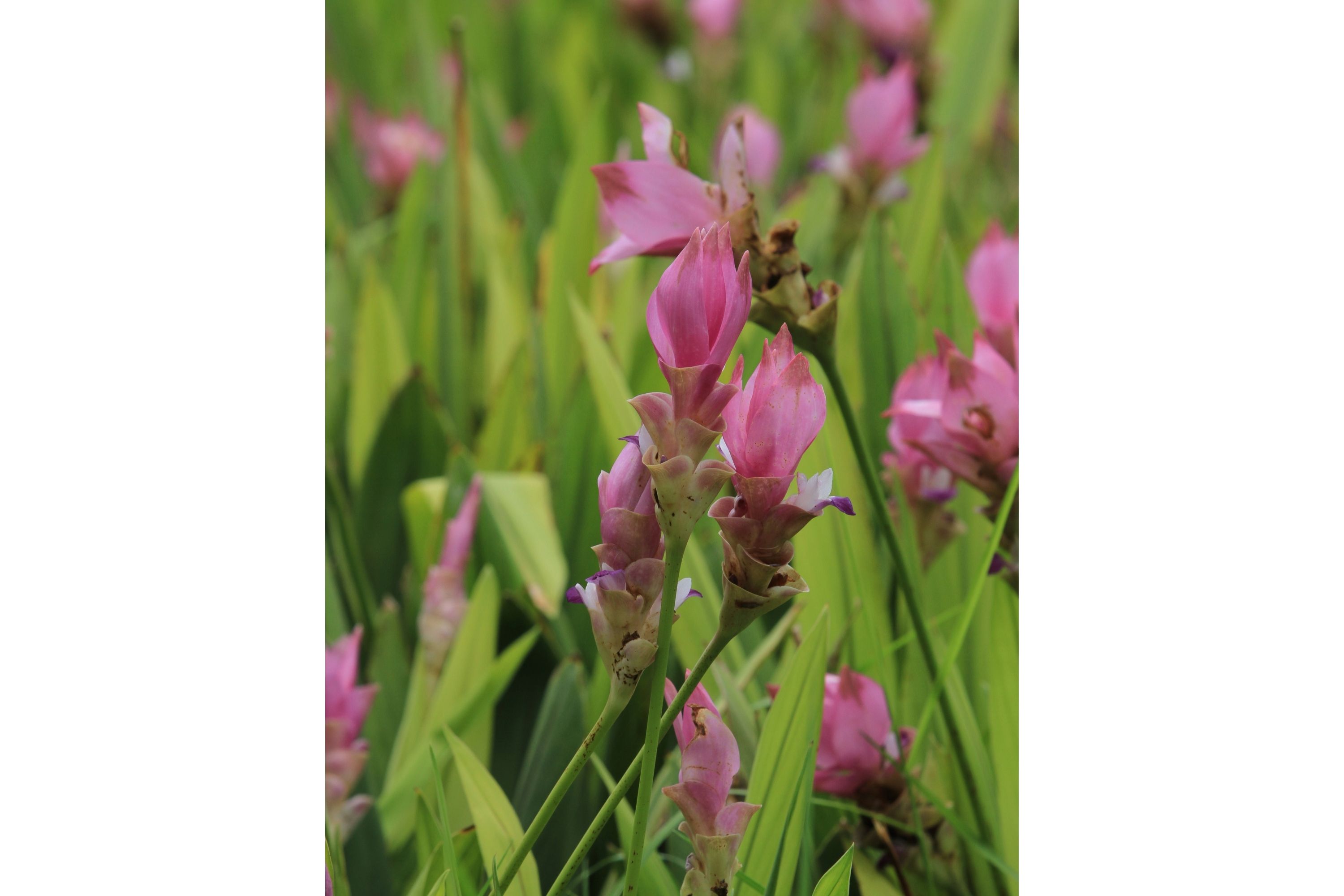Siam tulip
(Curcuma alismatifolia)

Description
Curcuma alismatifolia, commonly known as Siam Tulip or Thai Tulip, is a tropical perennial plant that belongs to the family Zingiberaceae. The plant is native to Thailand, Myanmar, and other Southeast Asian countries. It is grown as an ornamental plant for its strikingly beautiful flowers, which resemble tulips. Taxonomy and Etymology The plant was first described in 1884 by the Dutch botanist, J.E. de Vriese. The name Curcuma is derived from the Arabic word "kurkum," which means saffron, due to the bright yellow color of its rhizomes. The species name "alismatifolia" is derived from the genus Alisma, which belongs to the family Alismataceae, and the Latin word "folium," which means leaf, referring to the shape of the leaves that resemble those of the Alisma plant. Description Curcuma alismatifolia grows up to 50 cm in height and has a clumping habit. The plant has large, glossy, green leaves that are about 30 cm long and 10 cm wide. The leaves emerge from an underground rhizome, which is a horizontal stem that grows below the ground. The rhizome is large, fleshy, and fragrant, with a bright yellow color. The inflorescence of Curcuma alismatifolia is a cone-shaped spike that grows up to 30 cm long and 15 cm wide. The spike is composed of many small, tubular flowers that are densely packed together. The flowers are white or pink in color, with a yellow or orange center. The bracts that surround the flowers are large, leaf-like structures that are pink or red in color, making the inflorescence appear like a tulip. Cultivation Curcuma alismatifolia is a popular ornamental plant that is grown for its flowers. The plant prefers a warm and humid climate and grows best in partial shade. It can be grown in a well-drained, fertile soil mix that is kept moist but not waterlogged. The plant requires regular fertilization and should be watered regularly, especially during dry periods. It is susceptible to root rot if the soil is too wet or poorly drained. Propagation Curcuma alismatifolia is propagated by division of the rhizomes. The rhizomes can be divided in early spring, just before the plant begins to grow. Each division should have at least one healthy shoot and a portion of the rhizome. The divisions can be planted immediately or stored in a cool, dry place until planting. Uses Curcuma alismatifolia is primarily grown as an ornamental plant for its beautiful flowers. The plant is often used in landscaping and can be grown in pots or containers. The flowers are also used in floral arrangements and are popular as cut flowers. Medicinal Properties Curcuma alismatifolia is used in traditional medicine for its medicinal properties. The rhizomes of the plant are rich in curcumin, which has anti-inflammatory and antioxidant properties. The rhizomes are used to treat various ailments, including arthritis, liver disease, and digestive disorders. Conclusion Curcuma alismatifolia is a beautiful and versatile plant that is popular as an ornamental and medicinal plant. It is easy to grow and care for, making it an excellent choice for gardeners and landscapers. The plant's stunning flowers and unique inflorescence make it a standout addition to any garden or landscape. Its medicinal properties also make it an important plant in traditional medicine. Overall, Curcuma alismatifolia is a fascinating and valuable plant that deserves more attention from plant enthusiasts.
Taxonomic tree:







